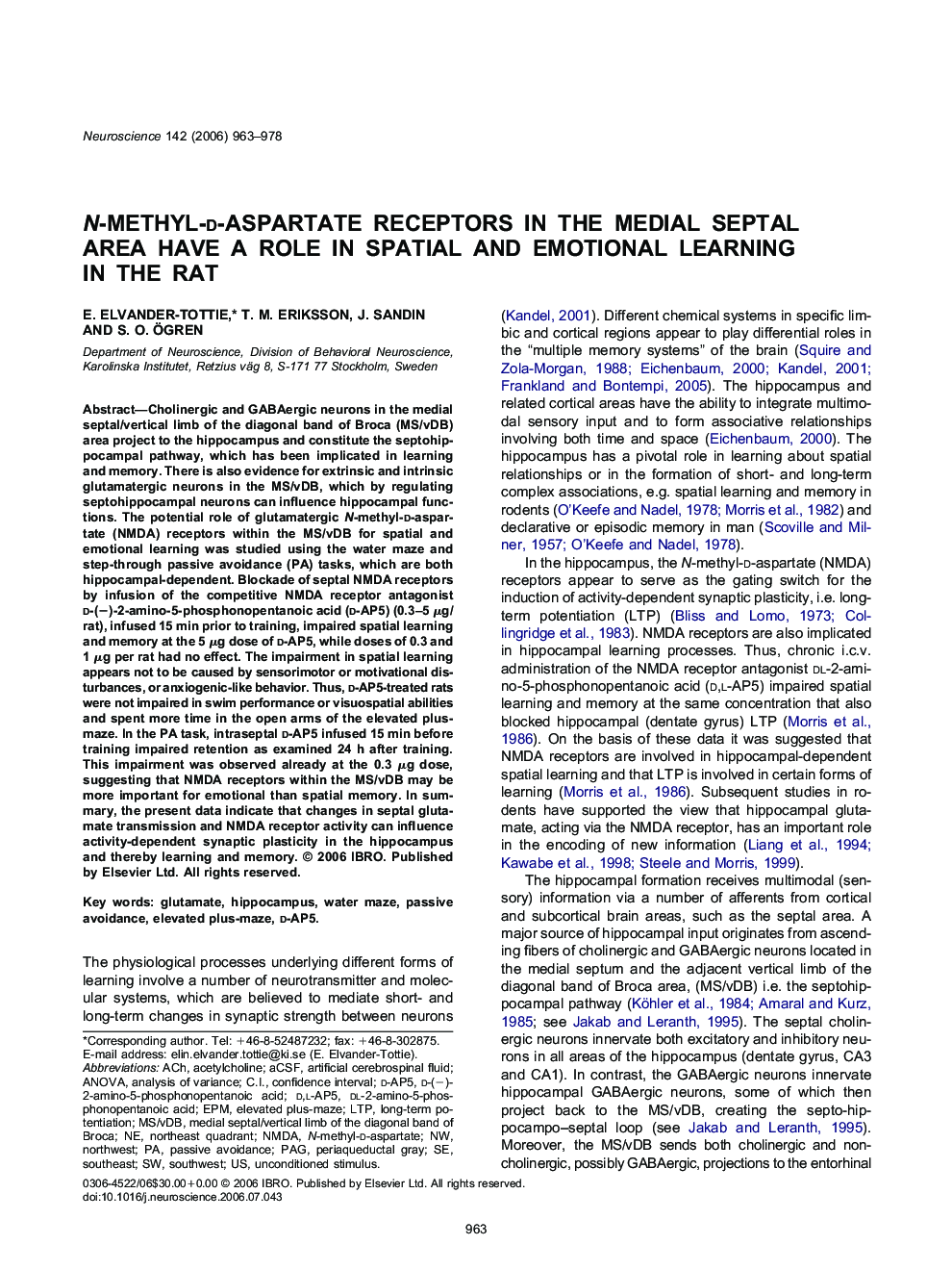| Article ID | Journal | Published Year | Pages | File Type |
|---|---|---|---|---|
| 4341558 | Neuroscience | 2006 | 16 Pages |
Cholinergic and GABAergic neurons in the medial septal/vertical limb of the diagonal band of Broca (MS/vDB) area project to the hippocampus and constitute the septohippocampal pathway, which has been implicated in learning and memory. There is also evidence for extrinsic and intrinsic glutamatergic neurons in the MS/vDB, which by regulating septohippocampal neurons can influence hippocampal functions. The potential role of glutamatergic N-methyl-d-aspartate (NMDA) receptors within the MS/vDB for spatial and emotional learning was studied using the water maze and step-through passive avoidance (PA) tasks, which are both hippocampal-dependent. Blockade of septal NMDA receptors by infusion of the competitive NMDA receptor antagonist d-(−)-2-amino-5-phosphonopentanoic acid (d-AP5) (0.3–5 μg/rat), infused 15 min prior to training, impaired spatial learning and memory at the 5 μg dose of d-AP5, while doses of 0.3 and 1 μg per rat had no effect. The impairment in spatial learning appears not to be caused by sensorimotor or motivational disturbances, or anxiogenic-like behavior. Thus, d-AP5-treated rats were not impaired in swim performance or visuospatial abilities and spent more time in the open arms of the elevated plus-maze. In the PA task, intraseptal d-AP5 infused 15 min before training impaired retention as examined 24 h after training. This impairment was observed already at the 0.3 μg dose, suggesting that NMDA receptors within the MS/vDB may be more important for emotional than spatial memory. In summary, the present data indicate that changes in septal glutamate transmission and NMDA receptor activity can influence activity-dependent synaptic plasticity in the hippocampus and thereby learning and memory.
